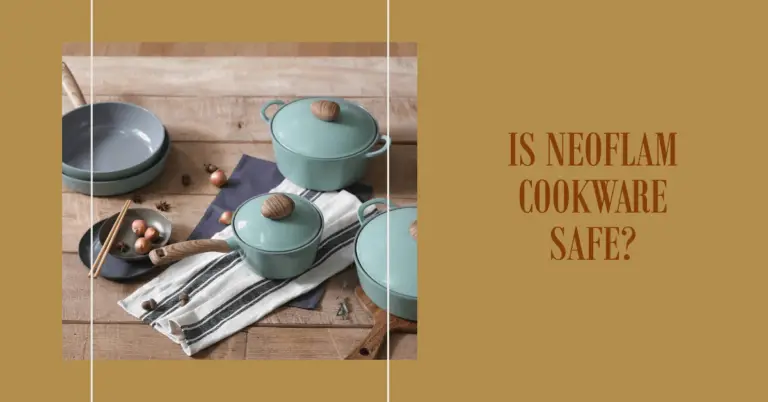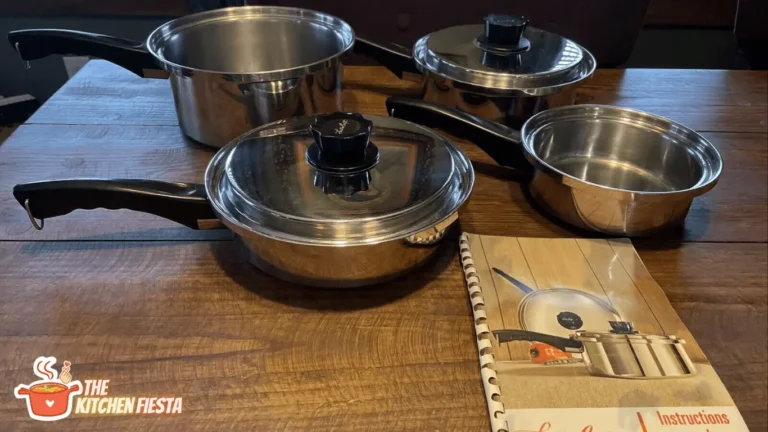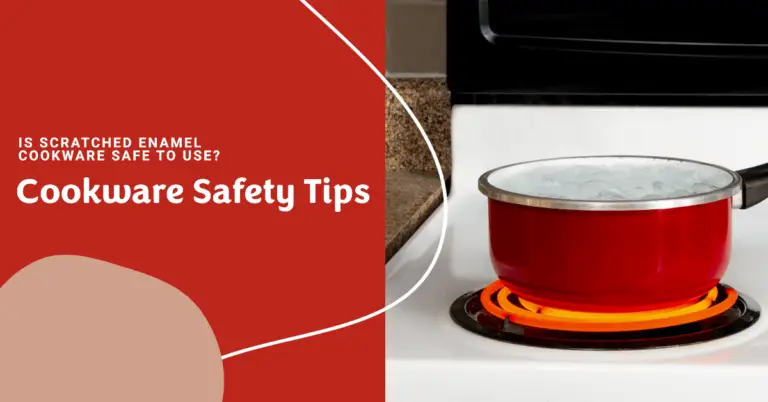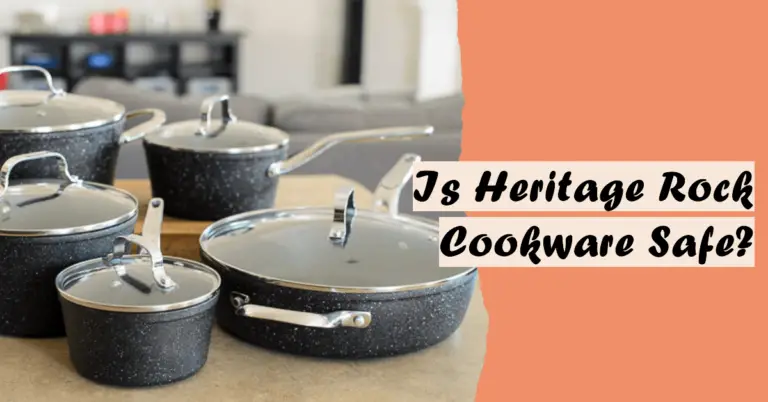Is Flonal Cookware Really Safe for Everyday Cooking?
Flonal pans and pots have become kitchen staples in many households for their slick, non-stick cooking surface. But over the years, concerns have emerged about whether flonal cookware is truly safe for our health. After looking at the potential risks and pros, the answer seems to be that flonal cookware is likely safe if used properly at lower heats. However, there are alternatives like ceramic and stainless steel that may be safer long-term options.
In this detailed guide, we’ll cover everything related to the safety of flonal cookware:
- What is flonal and is it toxic?
- Heating dangers and cancer concerns
- Pros of flonal like non-stick ability
- Safer alternatives like ceramic & stainless steel
- Guidelines for safer flonal usage
- Should you avoid flonal altogether?
Let’s start by understanding what exactly flonal cookware is and why people love it in the first place.
What is Flonal Cookware?
Flonal or flouropolymer coating has become ubiquitous in kitchens because it provides an incredibly slick, almost non-stick cooking surface. Flonal pans have the following key qualities:
- Non-porous – Food doesn’t penetrate the surface, making cooking and cleaning much easier.
- Low friction – The fluoropolymer molecules reduce surface friction so food easily slides off with little added fat or oil needed.
- Heat resistant – Flonal coatings like Teflon can handle temperatures up to 500°F.
- Affordable – Cheaper than many other non-stick options.
- Wide availability – Found in most stores and common brand names.
Flonal provides convenience that home cooks love. Eggs slide right off a flonal skillet and pancakes won’t stick. And after cooking, a quick scrub easily cleans the pan.
Flouropolymers like Teflon, Silverstone, and SupraGlide are all types of flonal coatings made from synthetic fluorine-carbon bonds. Though flonal has many kitchen benefits, it also comes with safety concerns.
Is Flonal Toxic? Potential Health and Heating Hazards
While flonal provides a slick non-stick surface, it also poses some risks, especially when overheated. Let’s look at the main health and toxicity issues around flonal pans.
Dangerous Fumes When Overheated
The biggest danger with flonal surfaces is that when overheated, they can release hazardous fumes.
- At temperatures above 500°F, the flouropolymer coating starts to break down and decompose. This releases toxic particles and gases.
- Breathing in these flonal fumes can cause flu-like symptoms in humans temporarily called “Teflon flu”. Symptoms include:
- Headache
- Fever
- Chest tightness
- Shortness of breath
- Flonal fumes are especially hazardous to pet birds and can be fatal. Hundreds of bird deaths have been reported from overheated flonal pans.
To avoid these toxic fumes, flonal cookware should never be preheated when empty. Food should be added before heating. And in general, cook over lower heat on medium or medium-low.
Potential Cancer Risks
There are also concerns around whether flonal coatings could be linked to cancer in humans:
- PFOA (perfluorooctanoic acid) was previously used in making flonal like Teflon. This chemical has been linked to certain cancers in studies on animals.
- However, major flonal brands like Teflon have now eliminated PFOA from their production process. New formulas are PFOA-free.
- But tiny surface scratches in flonal over time may still leach chemicals during cooking. This possible exposure remains a concern for some health experts. Long-term studies are limited.
- DuPont settled a cancer lawsuit related to PFOA in 2017 but did not admit liability.
While more research is needed, avoiding scratched and damaged flonal pans and not overheating flonal above 500°F can reduce any risks.
Tips for Safely Using Flonal Cookware
To safely cook with flonal-coated pans, here are some tips:
- Don’t preheat an empty flonal pan. Only preheat once food is added.
- Cook over lower heats, medium or medium-low. Avoid high heat.
- Avoid metal utensils that can scratch the flonal surface. Use wood or silicone.
- Don’t use harsh scrubbers. Gently wash with a sponge and mild detergent.
- Replace heavily scratched pans where the flonal coating has visibly deteriorated.
Following these guidelines minimizes exposure to any chemicals and reduces risk when cooking with flonal.
The Pros and Cons of Flonal Cookware
Given the possible health risks, why did flonal cookware become so ubiquitous? Here are the main desirable benefits along with some downsides:
Non-Stick Surface
Pros:
- Fried eggs slide right off the pan. No scraping needed.
- Foods don’t stick or burn onto the surface like cast iron or stainless steel.
- Easy cleanup – foods release with minimal scrubbing required.
Cons:
- Non-stick coating can degrade and chip over time.
- Not as naturally non-stick as well-seasoned cast iron or ceramic.
Heat Conductivity
Pros:
- Few hot spots means food cooks uniformly without burning.
- Allows quick heating on low to medium burner temperatures.
- Compared to materials like ceramic or cast iron that heat unevenly.
Cons:
- Poor heat conductivity compared to metals like aluminum and copper.
- Not safe for high heat searing.
Affordable Price
Pros:
- Cheaper than many other non-stick options like ceramic-coated pans.
- Mass manufacturing keeps costs low.
- Easy to find inexpensive flonal pans at most major retailers.
Cons:
- While inexpensive up front, flonal pans often don’t last as long as more durable materials like stainless steel.
- Replacing degraded flonal pans can add up long-term.
Variety of Options
Pros:
- Pans, pots, muffin tins, bread pans, waffle makers, griddles.
- Leading brands like Calphalon, Anolon, and T-fal all use flonal.
- Available as ceramic flonal combo pans.
Cons:
- Limited high heat applications compared to bare metal pans and pots.
- Few flonal options for high-end cookware.
This balance of pros and cons made flonal cookware popular, though safety questions remain.
Alternatives to Flonal Pans: Ceramic, Stainless Steel, Cast Iron
Given the health concerns around flonal at high temperatures, you may want to consider some safer, non-toxic alternatives for cookware. Here are some options:
Ceramic Cookware
Ceramic pans have grown popular as a safer non-stick alternative.
Pros:
- Coated with inorganic sand, so no toxic fumes released.
- Naturally non-stick surface, especially if seasoned.
- Stylish designs and colors available.
Cons:
- Surface can degrade over time with heavy use.
- Not as slippery smooth as flonal.
- Prone to shattering if dropped.
Leading ceramic non-stick brands include GreenPan, Caraway, and Pure Ceramic.
Stainless Steel
A classic pan material, stainless steel is durable:
Pros:
- Does not react with foods, safer for health.
- Won’t degrade over time with heavy use.
- Can be used on induction cooktops.
Cons:
- Not naturally non-stick. Requires more oil/butter.
- Can discolor from high heat.
- Heats unevenly leading to hot spots.
Quality stainless steel pan brands include All-Clad, Cuisinart, and KitchenAid.
Cast Iron
Cast iron has made a comeback for its durability:
Pros:
- All-natural material that can last generations.
- Becomes naturally non-stick over time when seasoned.
Cons:
- Very heavy, especially Dutch ovens.
- Prone to rusting if not maintained.
- Requires more seasoning maintenance.
Top cast iron pan brands include Lodge, Le Creuset, and Smithey.
Is Flonal Worth the Risk? Safer Usage Tips
Given its risks at high heat yet convenience benefits, is flonal cookware worth it? There are a few ways to balance safety and functionality:
- Use flonal at lower heats following the safety precautions.
- Consider alternatives like ceramic or stainless steel.
- Mix and match – use flonal for some uses and ceramic or stainless for others.
If you do choose to go with flonal, be very careful to not overheat it. Follow the usage and care recommendations:
- Always preheat pans only once food is added.
- Cook over medium or medium-low heat. Avoid high heat searing.
- Use wood, plastic, or silicone utensils to avoid scratches.
- Replace heavily scratched and worn pans.
- Ventilate kitchen well when cooking.
While no pan surface is definitively proven hazardous, flonal does have risks if overheated. So exercise proper precautions or consider alternative cookware for long-term everyday use.
The Bottom Line: Weigh the Flonal Pros and Cons
Flonal revolutionized non-stick cooking and still offers convenience benefits unmatched by alternatives. But legitimate health concerns remain about overheating dangers and possible toxicity.
By following safer cooking guidelines and considering alternative materials, flonal can likely be used safely for those who prefer its ease of use. But weigh the risks and make an informed decision based on your needs. With proper care and lower temperature cooking, flonal cookware may provide an affordable non-stick option without significant risk.




